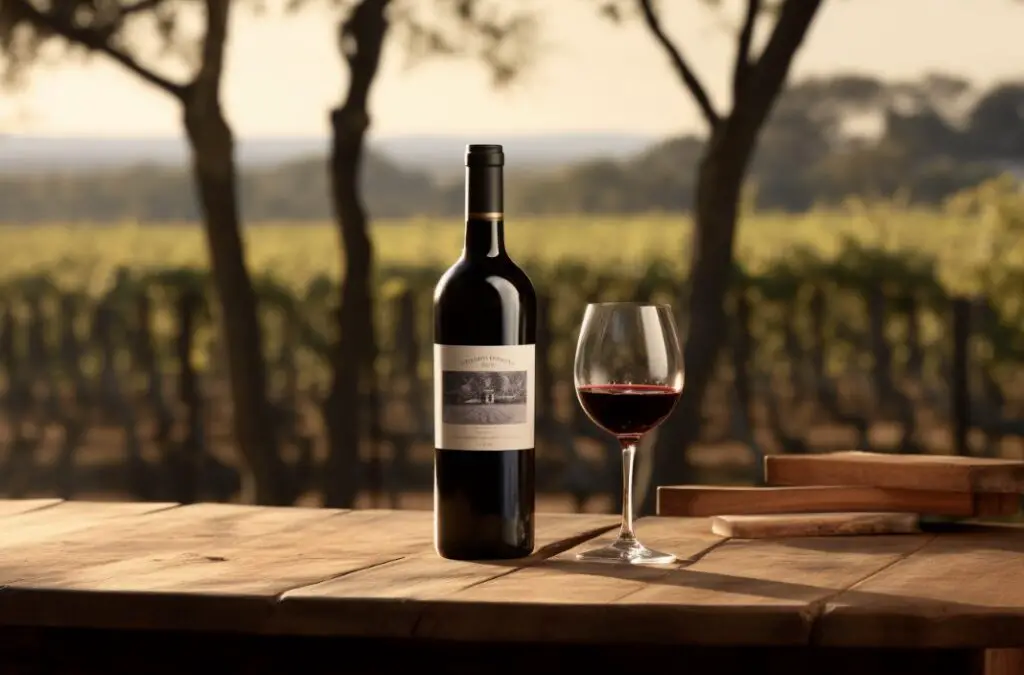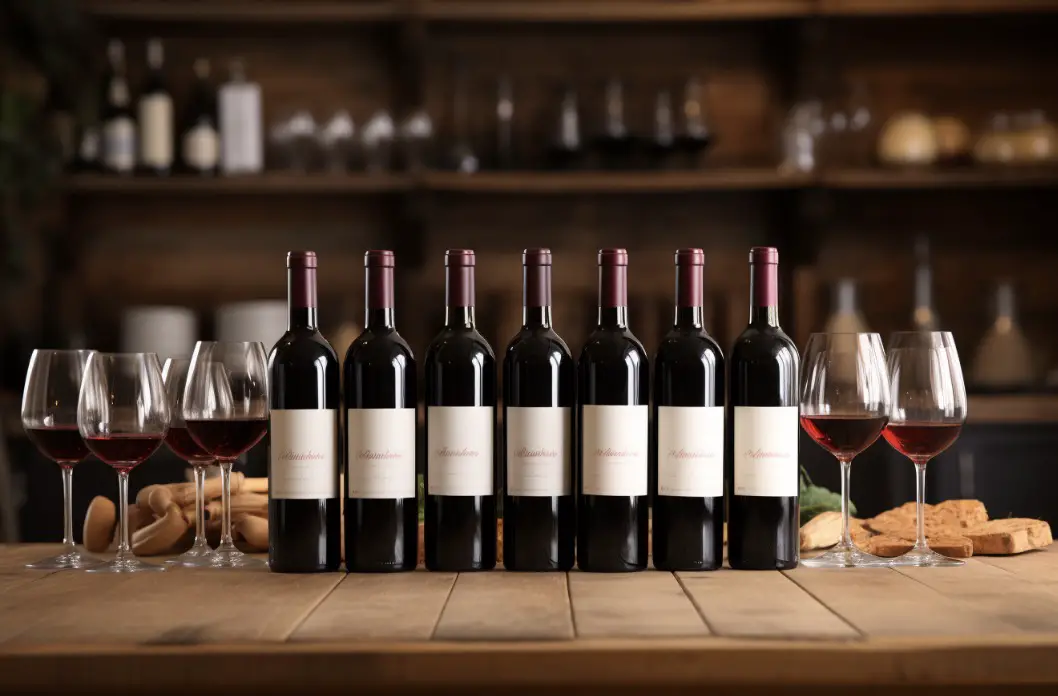As a wine lover and experienced taster, I am constantly on the lookout for new and exciting wines that offer a similar experience to some of my all-time favorites.
One such favorite is a classic Burgundy. And while there’s no true substitute for a genuine Burgundy, there are other wines out there that come close in terms of taste, complexity, and overall experience.
In this post, I’ll introduce you to five alternatives that are worth exploring if you’re a fan of Burgundy wines.
What is Burgundy wine at what makes it special?
Burgundy wine, also known as Bourgogne wine, refers to the wines produced in the Burgundy region of France. It is considered one of the most prestigious and influential wine regions in the world.

Burgundy wines are primarily made from two grape varieties: Pinot Noir for red wines and Chardonnay for white wines, although other grape varieties like Gamay and Aligoté are also used to a lesser extent.
What makes Burgundy wine unique and highly regarded can be attributed to several factors:
- Terroir: Burgundy has a complex patchwork of terroirs, which refers to the combination of soil, climate, and topography. The region has a diverse range of soils, including limestone, clay, and marl, which greatly influence the character and quality of the wines. The concept of terroir is highly valued in Burgundy, and the wines are known for expressing the nuances of their specific vineyard sites.
- Appellations: Burgundy has a unique system of hierarchical appellations, which classify the wines based on the quality and origin of the grapes. At the top of the hierarchy are Grand Cru vineyards, followed by Premier Cru vineyards and Village appellations. These designations ensure that the wines reflect the distinctiveness of their specific vineyard locations.
- Limited Production: Burgundy produces a relatively small amount of wine compared to other wine regions, leading to limited availability. This scarcity adds to the desirability and value of Burgundy wines.
- Focus on Single Vineyard Expression: Burgundy wines are often produced from single vineyard plots, emphasizing the individuality of each site. This focus on expressing the unique characteristics of specific vineyards, known as terroir-driven winemaking, is highly valued in Burgundy.
- Traditional Winemaking Techniques: Many Burgundy producers adhere to traditional winemaking methods, including hand-harvesting, gentle pressing, and fermentation with natural yeasts. These techniques aim to preserve the purity of the fruit and the expression of terroir.
- Ageability: Burgundy wines, particularly those from top vineyards and vintages, have excellent aging potential. The red wines can develop complex aromas and flavors over time, while the white wines gain richness and depth with age.
Overall, Burgundy wine’s uniqueness lies in its emphasis on terroir, the hierarchy of appellations, limited production, and traditional winemaking practices. These factors contribute to the region’s reputation for producing some of the most sought-after and highly regarded wines in the world.
1. Oregon Pinot Noir
Taste and Origin
Oregon Pinot Noir is a fantastic alternative to Burgundy, particularly those from the Willamette Valley. These wines are known for their elegance, finesse, and earthy flavors. Oregon Pinot Noir has a beautiful balance of fruit, earth, and spice, with a silky texture and smooth finish, similar to the taste profile of a Burgundy.
Pros:
- A more affordable option compared to high-quality Burgundy wines
- A unique expression of the Pinot Noir grape, with a distinct terroir
Cons:
- Not as widely available as Burgundy, depending on your location
- Some may find Oregon Pinot Noir to be less complex than a true Burgundy
2. Barolo
Taste and Origin
Barolo is a bold and powerful wine from the Piedmont region of Italy. Made from the Nebbiolo grape, Barolo is often referred to as the “king of wines” and offers a complex and assertive profile. While the flavor profile may be quite different from a Burgundy, the depth and complexity of a Barolo make it a worthy alternative for those seeking a similar experience.
Pros:
- A powerful and complex wine with a long aging potential
- A unique and bold expression of the Nebbiolo grape
Cons:
- Can be quite expensive, especially for high-quality bottles
- The boldness and assertive nature of Barolo may not be appealing to all Burgundy lovers
3. New Zealand Pinot Noir
Taste and Origin
New Zealand Pinot Noir is an exciting alternative to Burgundy, offering a fruit-forward and vibrant expression of the Pinot Noir grape. These wines, particularly those from the Central Otago and Marlborough regions, showcase bright red fruit flavors, such as cherry and raspberry, as well as earthy and herbal undertones.
Pros:
- A more fruit-forward and vibrant expression of Pinot Noir
- A unique and exciting alternative to Burgundy from a burgeoning wine region
Cons:
- May be too fruit-forward for those who prefer the earthy and savory notes of a Burgundy
- Not as widely available as Burgundy, depending on your location
4. Rioja
Taste and Origin
Rioja is a renowned wine region in Spain, known for producing exceptional wines made from the Tempranillo grape. Aged Rioja wines, particularly those labeled as “Reserva” or “Gran Reserva,” offer a complex and earthy profile, with notes of leather, tobacco, and dried fruit. The aging process gives these wines a depth and complexity that can be compared to a Burgundy.
Pros:
- A unique and complex alternative to Burgundy, with a distinct Spanish influence
- Aged Rioja wines offer exceptional value for the price
Cons:
- The flavor profile may be quite different from a Burgundy, with more emphasis on leather and tobacco notes
- Some may find the tannin structure of a Rioja to be too assertive compared to a Burgundy
5. Chianti Classico
Taste and Origin
Chianti Classico is a classic Italian wine made from the Sangiovese grape in Tuscany. These wines offer a balance of fruit, earth, and spice, with a medium body and firm tannin structure. The complexity and elegance of a Chianti Classico can make it a satisfying alternative to a Burgundy for those seeking a similar experience.
Pros:
- A more affordable option compared to high-quality Burgundy wines
- A balanced and elegant expression of the Sangiovese grape
Cons:
- The tannin structure and flavor profile may be quite different from a Burgundy
- Some may find Chianti Classico to be less complex than a true Burgundy
My Personal Recommendation
In summary, while there’s no true substitute for a genuine Burgundy, there are plenty of alternatives out there that offer a similar experience in terms of taste, complexity, and overall enjoyment.
Oregon Pinot Noir, Barolo, New Zealand Pinot Noir, Rioja, and Chianti Classico are all fantastic options to explore if you’re a fan of Burgundy wines.
As for my personal recommendation, I would encourage you to try an Oregon Pinot Noir from the Willamette Valley.
I find that these wines offer a beautiful balance of fruit, earth, and spice, with a silky texture and smooth finish that closely resembles the taste profile of a Burgundy. Plus, they’re often more affordable than a high-quality Burgundy, making them an excellent option for everyday enjoyment. Cheers!
FAQs
What wine is most similar to Burgundy?
The wine region that is most similar to Burgundy in terms of style and characteristics is Oregon’s Willamette Valley. Both regions are renowned for producing exceptional Pinot Noir wines that exhibit elegance, complexity, and a distinct expression of terroir. The cool climate and diverse soils of Willamette Valley contribute to the production of wines that share similarities with Burgundy, making it a great alternative for those seeking a Burgundian-style experience.
What wine is closest to a Malbec?
A wine that is closest to a Malbec in terms of flavor profile and characteristics would be a Carmenere. Both Malbec and Carmenere are red wines known for their rich, full-bodied nature, dark fruit flavors, and smooth tannins. Carmenere is often described as having similar dark fruit notes with hints of spice, chocolate, and tobacco, making it a good alternative for those who enjoy Malbec.
Is Burgundy wine the same as Cabernet Sauvignon?
No, Burgundy wine is not the same as Cabernet Sauvignon. Burgundy wine refers to the wines produced in the Burgundy region of France, primarily made from Pinot Noir for red wines and Chardonnay for white wines. On the other hand, Cabernet Sauvignon is a grape variety that is widely grown in many wine regions around the world, including Bordeaux, California, and Australia. It produces full-bodied red wines with distinct flavors and characteristics different from those of Burgundy wines.
Is Malbec a Burgundy color?
No, Malbec is not a Burgundy color. Malbec is a red grape variety that typically produces a deep purple or inky red color in wine. Burgundy, on the other hand, refers to a region in France known for producing primarily red and white wines, with the red wines often exhibiting a range of shades from light to dark red.
What kind of wine is similar to Malbec?
A wine similar to Malbec would be Syrah (also known as Shiraz). Syrah shares some characteristics with Malbec, such as its bold and full-bodied nature, dark fruit flavors, and hints of spice. Both wines tend to have a smooth and rich texture, making them enjoyable to drink.
Is Malbec similar to Burgundy?
No, Malbec is not similar to Burgundy. Malbec is a red grape variety primarily grown in Argentina, while Burgundy refers to the wine region in France that produces both red and white wines. Burgundy is known for its Pinot Noir and Chardonnay wines, which have distinct characteristics and styles that differ from Malbec.




